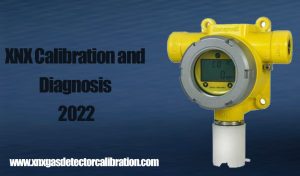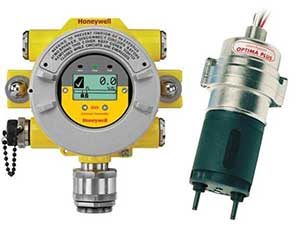Table of Contents
XNX Gas Detector Calibration and Diagnostics
This article covers the basics of XNX gas detector calibration and diagnostics. If you are new to this series, this guide will teach you everything you need to know to get started with your device. This manual also covers XNX Sensors and the XNX Universal Transmitter. If you have any questions, contact Honeywell Technical Support. They’ll be happy to help you get started!

XNX universal transmitter
Before you can properly calibrate your XNX Honeywell gas detector, you should know how to configure the transmitter. This device has two main functions: transmitter and calibration. The transmitter allows you to set alarm levels and range. Once you know how to calibrate the transmitter, you can set up the detector. Here are some instructions to follow:
The XNX Universal Transmitter has several calibration settings. For example, you can change the values of the overrange and warning outputs in the mA level settings. You can also change the mA output in this field. The transmitter will warn you when the calibration interval reaches the maximum. The mA output settings allow you to configure the transmitter for either level.
The mV sensor display shows which sensor is currently configured. The list of available sensors can be scrolled with switches. If a sensor can detect more than one gas, you can set the target gas in the Gas Selection section. If it can’t detect more than one gas, you can discard it and switch to another sensor. XNX transmitters can also identify the gas present, and a gas sensor calibrated for one gas will not indicate the other.
XNX sensors
If you are unfamiliar with the calibration procedure for XNX Honeywell gas detectors, this guide will help you complete the necessary steps. First you need to determine the gas concentration for the calibration. Enter the concentration into the XNX Universal Transmitter after determination. Then you need to connect a flow controller to 1 LPM. After the sensor is calibrated, it calculates the zero adjustment and returns to the gas calibration menu.
The XNX universal transmitter contains three main components: the sensor cartridges, the mV sensor, and the replacement XNX EC sensors. The XNX Gas Detector can be used with any of these parts. It also offers remote and local HART(r) communication options. For more information about the individual parts of the detector, visit the manufacturer’s website.

You can also find calibration instructions for your sensor in the XNX Technical Manual. The manual also includes calibration instructions for the XNX Universal Transmitter. The calibration procedures are different for each sensor. In general, you need to feed the sensor with a known calibration gas to get the correct readings. Make sure you have the correct calibration gas for each sensor before you begin gas monitoring. XNX gas detectors are made from high quality materials that ensure your detector is a top-of-the-line product.
XNX diagnostics
To run XNX Diagnostics for Honeywell gas detector calibration, the XNX Universal Transmitter must be connected to a valid Honeywell network. This allows XNX Diagnostics to test the transmitter’s range and alarm settings, as well as its gas concentration. The information menu can be accessed from the transmitter status menu. It also provides other useful information such as B. the current status of the transmitter.
After purchasing your transmitter, the next step is to perform a calibration. A common transmitter platform simplifies installation and maintenance, reducing training time and the risk of misinterpreting messages. It also minimizes inventory costs and inventory for maintenance spares. In addition, XNX offers flexibility in signal outputs and a wide range of gas detection technologies, ensuring the sensor’s accuracy is always up to date.
The span gas calibration menu allows you to enter the span gas concentration and zero adjustment. By entering these values, the XNX Universal Transmitter will calculate the zero adjustment and return to the gas calibration menu. When finished, click Skip to return to the calibration menu. The Span Gas Concentration screen allows you to enter the span gas concentration into your detector and calibrate it. Selecting a digit decreases or increases the value.
